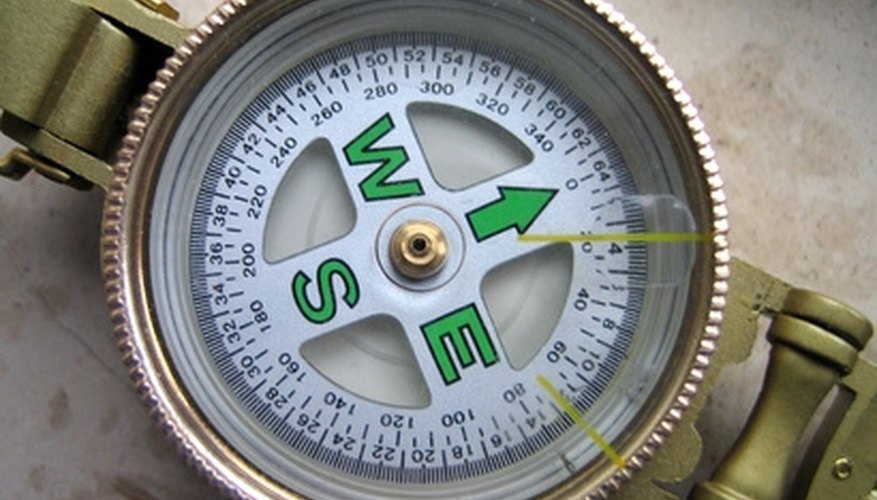
The engineer lensatic compass is a precision instrument useful in measuring directions to objects and for land navigation. These compasses are not artillery compasses but are used in a very similar fashion. As the name implies, the lensatic compass employs a lens in the rear sight that allows precise readings of the dial. This precision is ineffective if the compass is improperly held or misused when taking an azimuth.
Centerhold Technique
Open the compass by folding down the thumb loop and opening the front cover until it is flat with the base of the compass. Raise the rear sight until it is perpendicular to the base.
Hold the compass by placing your thumb through the thumb loop and extending the index finger along the side of the base. The remaining fingers should be curled close underneath the base. Cup your other hand around the hand holding the compass to provide additional support. Tuck your elbows against the sides of your body.
Hold the compass directly in front of you against the center of your chest. With elbows still tucked against the side of your body, rotate your body until you are facing the desired direction on the compass. Sight a landmark directly in front of you and step off.
Cheekhold Technique
Open the compass by folding down the thumb loop and raising the front cover so it is perpendicular with the base. Raise the rear sight until it forms an approximately 45-degree angle to the base.
Hold the compass by placing your thumb through the thumb loop with the index finger curled around the edge of the base. The other hand should be cupped around the hand holding the compass to provide additional support. Keep elbows tucked against the side of the body.
Raise the compass until it is resting against the cheek below the eye, keeping your elbows tucked against the sides of your body. Proper positioning allows you to sight landmarks with the sighting line on the cover with the slot at the top edge of the rear sight.
Take an azimuth to a landmark by aligning the landmark with the sighting line and rear sight slot. Read the compass dial by looking through the rear sight without moving the compass. The azimuth is read in degrees or mils.
References
Writer Bio
David Chandler has been a freelance writer since 2006 whose work has appeared in various print and online publications. A former reconnaissance Marine, he is an active hiker, diver, kayaker, sailor and angler. He has traveled extensively and holds a bachelor's degree from the University of South Florida where he was educated in international studies and microbiology.



